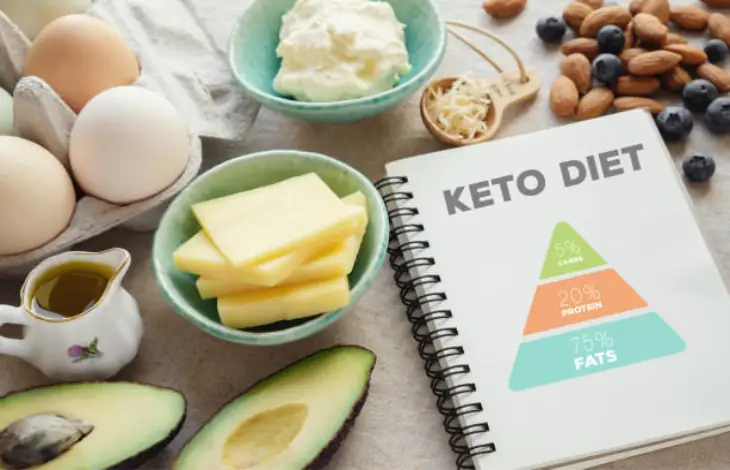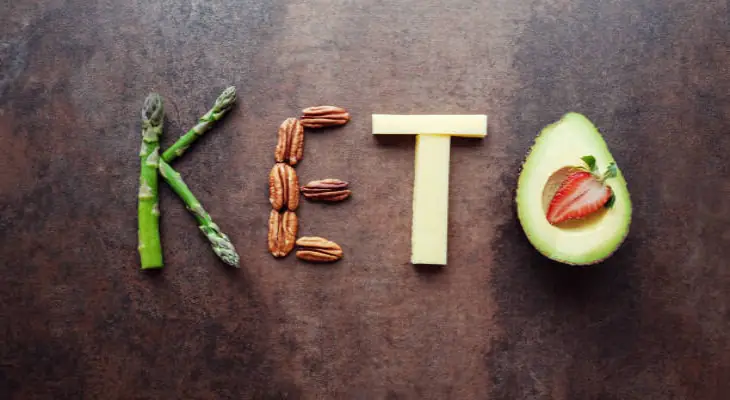
The ketogenic diet, or Keto diet, has recently become a popular choice among those trying to reduce their body fat percentage. In just a few weeks to a few months, people have lost weight by following this diet. The gender gap in its popularity is nonexistent. The meals provided by this diet are comprehensive, but the total daily food intake is restricted. The ratio of carbs, proteins, and fats to the regular amount has also been altered. It's recommended that you consume 20–50 g of carbohydrates and up to 40 g of protein daily. This eating plan contains 75% fat, which is significantly higher than average (Spritzler, 2020).
Since it's high in fat, some people think it's not good for them to follow. However, it is also a weight-loss diet plan. This is a low-carbohydrate, high-fat diet. The majority of foods are high in protein, while some of the nuts and seeds and the small number of carbohydrates round out the meal. This eating schedule kick-starts your metabolism and produces reactive bodies. A body with these remains inside of it is unhealthy. In this diet, ketone bodies are the primary fuel source. In fact, originally, this diet plan was formulated with those who suffer from neurological disorders in mind.
ALSO READ: 3 Pros and Cons Of Ketogenic Diet
In later times, it was used to treat diabetes. And now, in the present day, it is well-liked for the purpose of slimming down.
Proteins:
There is a reasonable quantity of protein in a ketogenic diet. The required protein intake is 40 g. Proteins play a crucial role in the ketogenic diet. It has a wide variety of uses, including those involving eggs, milk, and cheese. Amino acids that are essential for human health but absent from plant-based proteins can be found in abundance in foods high in protein. Proteins serve so many purposes in the body, making them an excellent dietary supplement. There are those who routinely disregard their bodies' protein requirements.
They lower the protein intake necessary to sustain the increased formation of ketogenic bodies. This procedure has an effect on ketone production as a whole. However, it hinders the development of muscle tissue and the proliferation of cells. The brain, liver, and cells all need it. When you lose weight, you also lose muscle and fat. Having a healthy diet is also essential. The use of high-carbohydrate, low-protein diets has been demonstrated by scientific research to be beneficial. It helps with insulin regulation and weight loss.
Carbohydrates
Twenty grams of carbohydrates is the maximum allowed daily intake. For some, the number will be higher. That ketosis is the desired outcome of the low-carb diet. This point may be reached earlier in some people, and in those cases, the body may be able to tolerate more than 2g of carbohydrates per day.
Carbohydrates are a quick and easy way to get a boost of energy. The ketogenic diet does not advocate for this. The energy that was previously stored is now being utilized. We are putting this power to use in our regular activities. On the ketogenic diet, one's primary source of fuel is fats, which the body then uses for energy. Carbohydrates that were previously cut out of the diet are gradually being reintroduced.
Fats and Oils:
The ketogenic diet relies heavily on oil and fat consumption. Seafood, sardines, salmon, and other fish are good sources of these fats. It's important to use healthy fats and oils. The reason is: they do not lead to artery occlusion. Oils and fats that are low in oxidation value are preferable. Ketone bodies can be increased by eating these healthy fats. The goal of the ketogenic diet is to raise blood levels of the metabolic byproducts known as ketone bodies.
The ketogenic diet, it supplies about 75% of the required energy. High-quality fats with a low risk of rancidity are used. For the same effect, you can use coconut oil. Cheese comes in many varieties, and each one has its own unique nutritional profile. Even olive oil has a high concentration.
Nuts and Seeds
The ketogenic diet relies on the consumption of nuts and seeds such as flaxseeds, sunflower seeds, and chia seeds. For vitality and minerals, try some seeds. There is zinc and protein content as well. Nuts, like avocados, are a good source of healthy fats and nutrients. It's also rich in healthy fats and essential fatty acids. The brain benefits from these fatty acids.
Intermittent Fasting
Certain individuals find that combining the ketogenic diet with intermittent fasting yields the best results. The results have been shown to speed up the weight loss process. Combining the ketogenic diet with fasting every 6-12 hours also increases metabolic rate. During periods of fasting, it begins to produce ketone bodies. Many elect to take this path because they find it intriguing. People are always looking for a quick fix, and the latest and greatest in diet trends always seem to do the trick.
Conclusion
Although a diet, the ketogenic diet is a nutritional strategy. Quite a few people have used it to successfully shed unwanted pounds
Instead of eating more carbohydrates and proteins, you will eat more fats. Increasing your fat intake does not mean you should eat more fat in general. It paves the way for good fats to be used. Oils extracted from nuts and seeds, olives, coconuts, and fish are commonly used. The ketogenic diet was developed with the goal of challenging the body to its limits. When the body's energy needs are met by the formation of ketone bodies. It also calls for regular exercise and evaluation of the effects on health.





